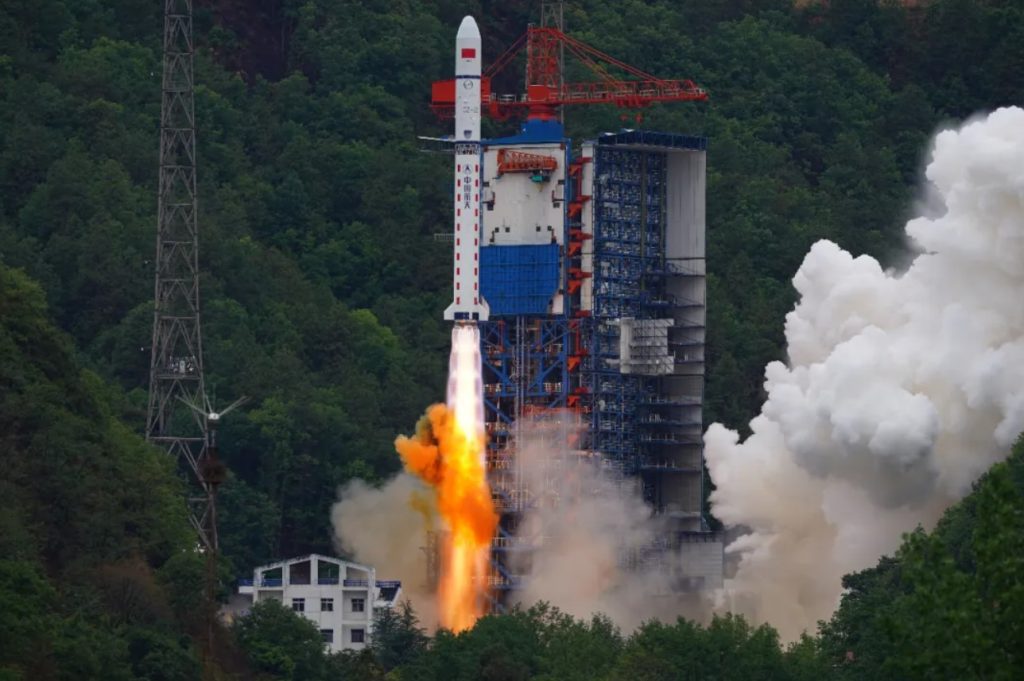HELSINKI — China sent its second Yaogan-42 spy satellite into space over the weekend, following the launch of the first one a few weeks earlier.
A Long March 2D rocket took off from Xichang Satellite Launch Center at 7:45 p.m. Eastern (2334 UTC) on April 20. The China Aerospace Science and Technology Corporation (CASC) announced confirmed the launch was successful within the hour.
CASC revealed that the previously unknown payload was the second set of Yaogan-42 satellites. Yaogan means “remote sensing.”
Neither CASC nor Chinese state media provided any details about the satellites. These statements did not include the typical general descriptions of Yaogan satellites.
Some Yaogan satellites are said to be used for activities such as land survey, crop yield estimation, environmental management, meteorological warning and forecasting, and disaster prevention and reduction. Other uses include “electromagnetic environment detection and related technical tests.”
Yaogan-42 (02) has been tracked by U.S. Space Force’s 18th Space Defense Squadron (SDS) in a 491 by 502 kilometer orbit inclined by 35 degrees. This is similar to the first Yaogan-42 satellite, launched on April 2, but with an angular separation of 142 degrees.
Outside observers believe Yaogan series satellites are intended for military and civilian purposes. The different sets of Yaogan satellites are thought to include optical imaging, synthetic aperture radar (SAR) and electronic intelligence (ELINT) satellites.
This combination provides detailed imagery and all-weather and all-day and night imagery, along with the collection of electronic signals from radar, communication systems and other electronic devices, covering both land and sea.
U.S. concerns over Chinese reconnaissance satellites
U.S. Officials have recently expressed worry about China’s accumulation of reconnaissance satellites. Chief Master Sgt. Ron Lerch, of the Space Systems Command’s intelligence directorate, warned in January that China’s surveillance spacecraft are giving the People’s Liberation Army unprecedented vision in space to monitor U.S. and allies’ activities in Asia-Pacific and other hotspots.
Notable additions to the series include Yaogan-41 to geosynchronous orbit in late 2023. That satellite was launched on a Long March 5, China’s largest operational rocket. The mission used a new, elongated 18.5-meter-long, 5.2-meter-diameter payload fairing. Meanwhile, China launched Ludi Tance-4, thought to be the world’s first geosynchronous orbit SAR satellite, in August last year.
“Paired with data from other Chinese surveillance satellites, Yaogan-41 could provide China an unprecedented ability to identify and track car-sized objects throughout the entire Indo-Pacific region and put at risk numerous U.S. and allied naval and air assets operating in the region,” Clayton Swope, a former U.S. intelligence official and now a senior fellow at the Center for Strategic and International Studies, said in January.
Saturday’s launch was China’s 17th orbital mission of 2024. The country is aiming to conduct around 100 launches in 2024. About 70 will be carried out by CASC, while China’s commercial launch service providers are planning approximately 30 launches.
In the next few weeks, CASC will conduct two important missions. The Shenzhou-18 human spaceflight mission to the Tiangong space station is set to launch on April 25 from Jiuquan, northwest China. The first-ever lunar far side sample return mission, Chang’e-6, is set to launch on May 3 from Wenchang.









